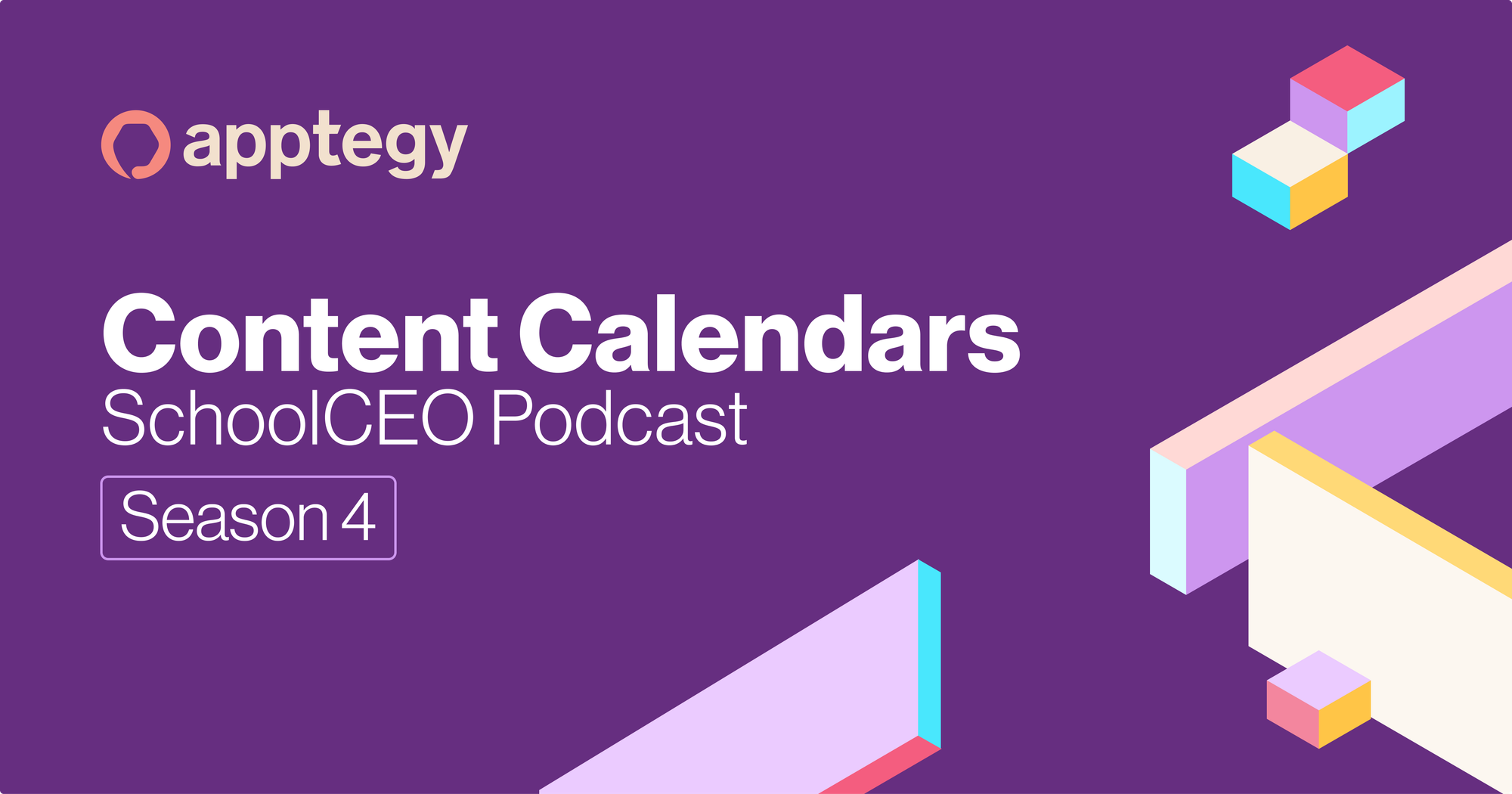Content Calendars
Today we discuss creating content guidelines and calendars into your comms plan.

Summary:
Subscribe to our newsletter at https://www.schoolceo.com/subscribe-now/.
Visit us at schoolceo.com and connect with SchoolCEO on LinkedIn or X/Twitter @school_ceo.
If you have a story you’d like to share with the SchoolCEO team, email us at eileen@schoolceo.com or schedule a call.
SchoolCEO is powered by Apptegy, the maker of the leading K-12 communications and brand management platform.
Episode Transcript
Welcome to the SchoolCEO Podcast. I’m your host, Eileen Beard. Let’s jump right into the next stage of developing your longterm communication plan. You’ve determined what channels you will use to reach your audience segments. Now you have to create content guidelines and content calendars for your channels.
Let me make a couple of quick notes before we get started here. I may be telling a lot of you what you already know. I’m also generalizing but we know every district has different wants and needs. So, simply take what you can use and leave the rest. Let’s dive in.
The first step to creating content guidelines is to establish your district's voice and tone. I like to think about it this way: tone is how formal or informal you sound. But voice is your district’s unique character or style. I’ll bet you sound a little more formal in the office and a little less formal when out to dinner with friends, right? The tones of those conversations will sound different. But you should still be you in either setting. So think about what makes your district your district. You might consider student demographics or geographic location, for example. But you especially want to take a look at your values and think about how your communication style reflects those.
You have a little room to play with tone depending on the circumstances and the channels. Obviously, you’ll want to have a more formal tone when discussing strategic planning or budget meetings, for instance. As we’ve discussed, platforms like TikTok and Instagram are a chance for you, the district, to show off a more playful side.
Next, it’s time to develop your content calendar. Start with non-negotiable content: board meetings, enrollment deadlines, testing windows, and major events. Then add your smaller and less predictable content like game wins and inspiring classroom stories. This will also include things like weather delays but we’ll talk more about that in the next episode on weaving in your crisis communication plan.
Now, assign platforms to each layer of content. Nearly all of that content should be added to your district app and website to start. If you have a live feed on those platforms, you will even include spur-of-the-moment social content there. Next, decide what will go in monthly principal messages and weekly newsletters, channels that are predictable and maintain consistent engagement. Finally, layer in your last-minute communications. If we’re talking social, you should have a frequency goal and plan the best days of the week to post. Tuesday through Thursday is generally considered a good engagement window, but there are many exceptions to that rule.
Now, map your communications to the academic year. Your non-negotiable content like board meetings or enrollment deadlines map themselves—they already have fixed times. Then create seasonal buckets for content unrelated to events. Back-to-school season is best for how-to content and reassuring messaging. Generally speaking, financial communications work best in spring and fall. Spring budget presentations align with the budget development cycle and give families time to understand funding before potential cuts or program changes. Fall communications can focus on how budget decisions led to classroom improvements. You’ll probably want to start enrollment drives in winter. Mid-semester communications can focus on celebrating achievements and reinforcing school culture, although I would recommend sharing this kind of content year-round.
Finally, remember to build feedback loops into your calendar. The time of day, time of year, frequency of communications or channels you use to communicate might need adjusting based on audience feedback.
The point is to be more proactive to decrease the amount of time you spend reacting. If you build in regular opportunities for gathering feedback from your stakeholders, you will better be able to serve them and they will feel that you care. And that is a recipe for avoiding complaints and avoiding more reactive work.
Thanks for joining me.

